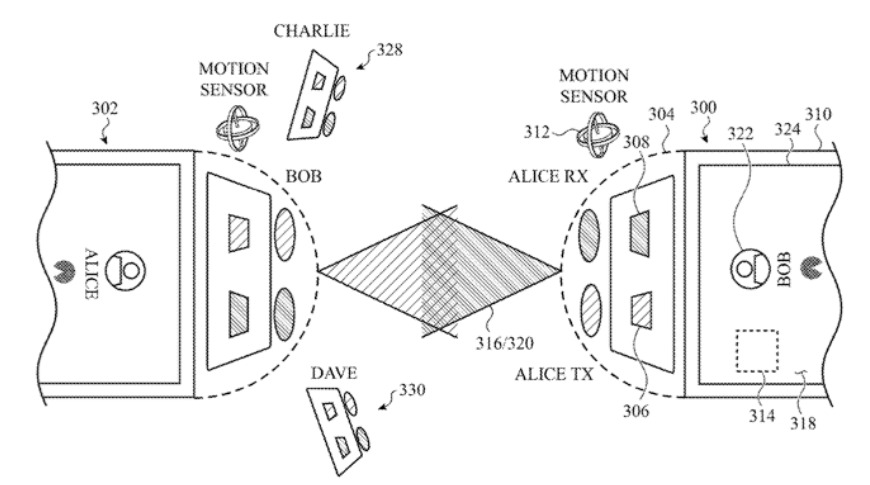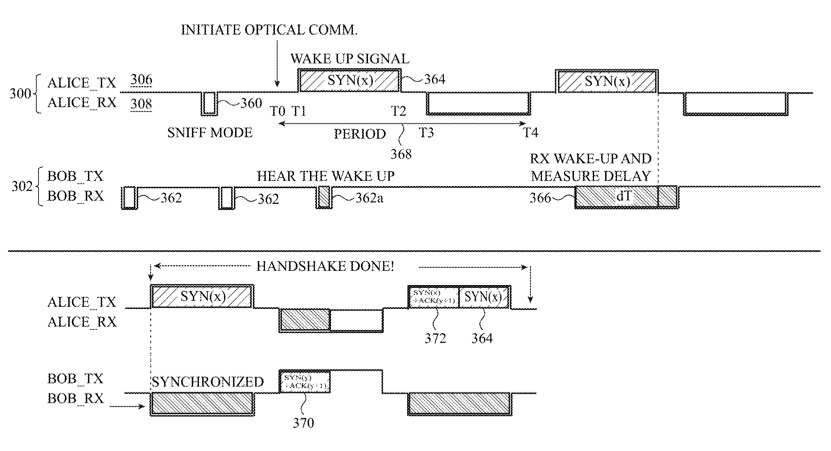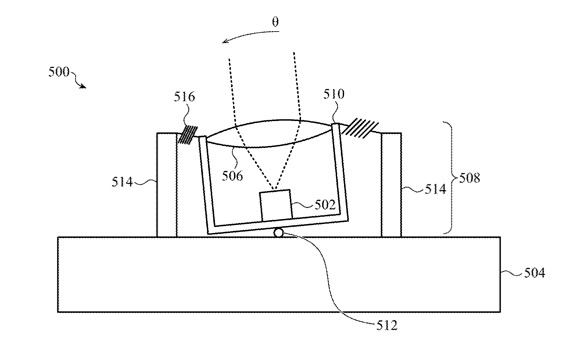Rather than the way AirDrop can send to any device nearby, Apple is investigating how to share data between iPhones by pointing one device at another, and then adjusting when one is moved.
Two related new Apple patents reveal how the company is investigating ways to have users share data between devices such as iPhones and iPads, more efficiently and securely. The first patent details how devices can detect each other.
"With the use of mobile electronic devices such as smart phones, tablet computers, and smart wearable devices becoming an indispensable part of modern life," says Apple in US Patent No 20190372668, "device-to-device interaction is expected to become the seamless digital extension of ad-hoc interpersonal communication."
"A prerequisite to device-to-device interaction is device-to-device awareness," it continues. "Device-to-device awareness is defined herein as the capability of electronic devices to discover (identify), map, and track other electronic devices, typically in real time."
Apple says that when devices can start by using a "discovery handshake protocol" to securely find, connect and identify each other. Thereafter, they may switch to a higher bandwidth system for actually exchanging data.
"The Bluetooth Low Energy (BLE) handshake protocol is one example of a device discovery handshake protocol," says Apple. "[However] poor response time (handshake latency) has been an issue with BLE handshakes."
"For example, the low duty cycle and frequency hopping used in BLE handshakes has resulted in discovery times of up to ten seconds, coupled with another five seconds of paging time," it continues. "Ideally, the device discovery process should be capable of being completed in less than a few (or couple) seconds."
Instead of BLE, Apple proposes that one alternative would be the use of optical transmitters and receivers. While the patent does not say this, the concept is similar to the old IRTalk system of using infrared optical equipment to beam files to another device. Apple used IR data transfer in the Newton and certain pre-G3 PowerBooks.
Between them, the six listed inventors of "Device Awareness in Line-of-Sight Optical Communication Systems," have over 200 patents, including many on optical communications, infrared transparent windows and photovoltaic devices.
Two of them, Omid Momtahan and Tong Chen, are also inventors of the other and related new Apple patent regarding "Systems and Methods for Adjusting Movable Lenses in Directional Free-Space Optical Communication Systems for Portable Electronic Devices."
This one is also about device to device communication, and it is also about potentially using optical methods, but it's more specifically about solving the problem of how precisely such a system needs to be aimed.
"An electronic device can include a free-space optical communication system to wirelessly transmit, receive, or exchange data with another electronic device," says Apple in US Patent No 20190372667. "However, a conventional directional free-space optical communication system is exceptionally dependent on precise alignment of communicating devices."
"As such," it continues, "conventional free-space optical communication systems cannot be incorporated into portable electronic devices that may be moved or repositioned from time to time."
Apple's solution involves a movable lens for transmitting data, and a photosensitive receiver.
"[For example] [0034] the light source of the source device can be any suitable electrical or electronic light source or combination of light sources, including both multipart and solid-state light sources," it says.
"The light source could be] a vertical-cavity surface-emitting laser (a 'VCSEL'); a vertical external-cavity surface-emitting laser; a light-emitting diode; an organic light-emitting diode... and so on," it continues.
The transmitting device has the ability to move because the photosensitive receiver can be monitored and that movement detected.
"[With a] free-space optical communication system with a source device and an endpoint device," says the patent, "...monitoring power output from a photosensitive area of a photodiode in the endpoint device for a maximum and, in response, sending a signal to the source device to stop changing a position of the source device lens."
These two patents represent only part of Apple's apparent efforts to leverage how users have multiple devices. The latest iPhone 11, iPhone 11 Pro and iPhone 11 Pro Max, all feature an Apple U1 chip that's expected to be used for similar purposes.
The U1 chip uses Ultra Wideband for spatial awareness, knowing where a device is and is orientated, plus where other devices are. So far it is only used by Apple to improve the convenience of AirDrop, however.
 William Gallagher
William Gallagher









-m.jpg)






 Thomas Sibilly
Thomas Sibilly
 Wesley Hilliard
Wesley Hilliard
 Marko Zivkovic
Marko Zivkovic

 Malcolm Owen
Malcolm Owen

 Amber Neely
Amber Neely










23 Comments
So, similar to the way you could exchange data between PalmPilots using infrared ports back in the late 90s? :-)
It's advances like this that will see the elimination of cash in our lifetimes. Once we can beam cash to homeless people securely and anonymously, the need for cash will be gone. I'll still need a way to give tips to housekeeping (asynchronously), so maybe that will be the next invention.
I am half kidding when I ask ... What could possibly go wrong on a crowded rush-hour subway train? ... "Sorry I was aiming at that blonde over there ..." I am sure it will have a layer of security options to avoid such issues.
Sorry, but if I'm onstage (musician) and need to AirDrop the next lead sheet to a band member, I don't want that telegraphed to the audience by picking up my 13" iPad Pro and pointing it at him/her.